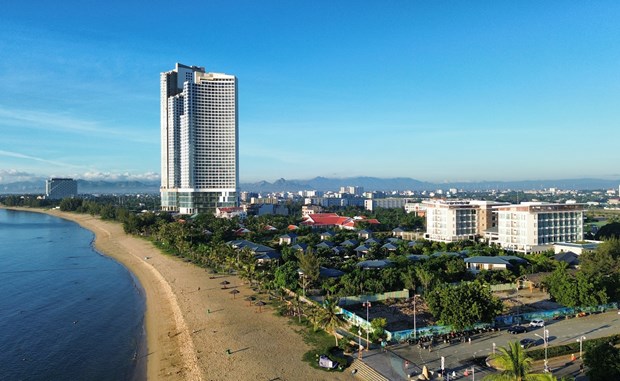 Economy
Economy


|
| Phan Rang-Tháp Chàm City, the south-central province of Ninh Thuận. — VNA/VNS Photo |
NINH THUẬN — The south-central coastal province of Ninh Thuận has set its sights on becoming a dynamic, fast-growing and sustainable development hub, with the maritime and urban economies playing significant roles in driving its growth.
Under a plan approved by the Prime Minister for the 2021-30 period with a vision to 2050, the province will concentrate its efforts on the southern region, laying the foundation for a coastal economic zone.
By 2030, the province aims to attain an above-average per capita income, placing it within the high middle-income tier nationally.
The province will also endeavour to reach an average annual Gross Regional Domestic Product (GRDP) growth rate of 10-11 per cent between 2021 and 2030, in which the agriculture-forestry-fisheries sector accounts for 12-13 per cent, industrial and construction 53-54 per cent, services 34-35 per cent, and tax-less-subsidies on products for 2-3 per cent.
The province also strives to have the digital economy contribute about 30 per cent of GRDP by 2030.
The industrial sector will account for 40 per cent of the province's total GRDP. Meanwhile, the agriculture sector will make use of advanced technology and contribute 7-8 per cent of the province's GRDP.
GRDP per capita is expected to reach VNĐ200 million (US$8,200) per year. The figure for population growth is set at 1.89 per cent per year.
The rate of trained workers reaches 75-80 per cent. The Human Development Index (HDI) is targeted to be at the national average level.
The urbanisation rate is aimed at around 55-56 per cent. Poverty rates would be kept well below 2 per cent.
Ninh Thuận has set out to bolster its transportation networks to cater to the specific demands of each urban area across the province.
A key part of this plan involves the development of Ninh Thuận's seaport system, including the Cà Ná and Ninh Chữ port zones, which serve as comprehensive national ports. These ports play a regional hub role, handling general cargo, containers and liquefied gas.
Under the plan, by 2030, energy and renewable energy will account for about 12 per cent of the province's GRDP, contributing 7.3 per cent of the total employment opportunities in the province.
The focus is on harnessing the natural advantages of abundant sunlight and wind to develop solar power, onshore and offshore wind power, liquefied-natural-gas (LNG) power, pumped storage hydropower and new energy sources.
By 2030, tourism will have evolved into a pivotal and sustainable economic sector, contributing 15 per cent of the entire province's GRDP.
Ninh Thuận aims to become an exceptionally attractive destination with high regional and national competitiveness.
The province is committed to efficiently maintaining and managing its economic and social infrastructure, actively responding to natural disasters, diseases and climate change.
A key part of this strategy involves ensuring a sustainable and equitable supply of water resources to drive socio-economic progress.
Ninh Thuận is also dedicated to preserving and honouring its rich and diverse cultural heritage, while simultaneously raising living standards and quality of life for its residents.
Robust national defence and security measures will be implemented to ensure the province's long-term stability. — VNS




